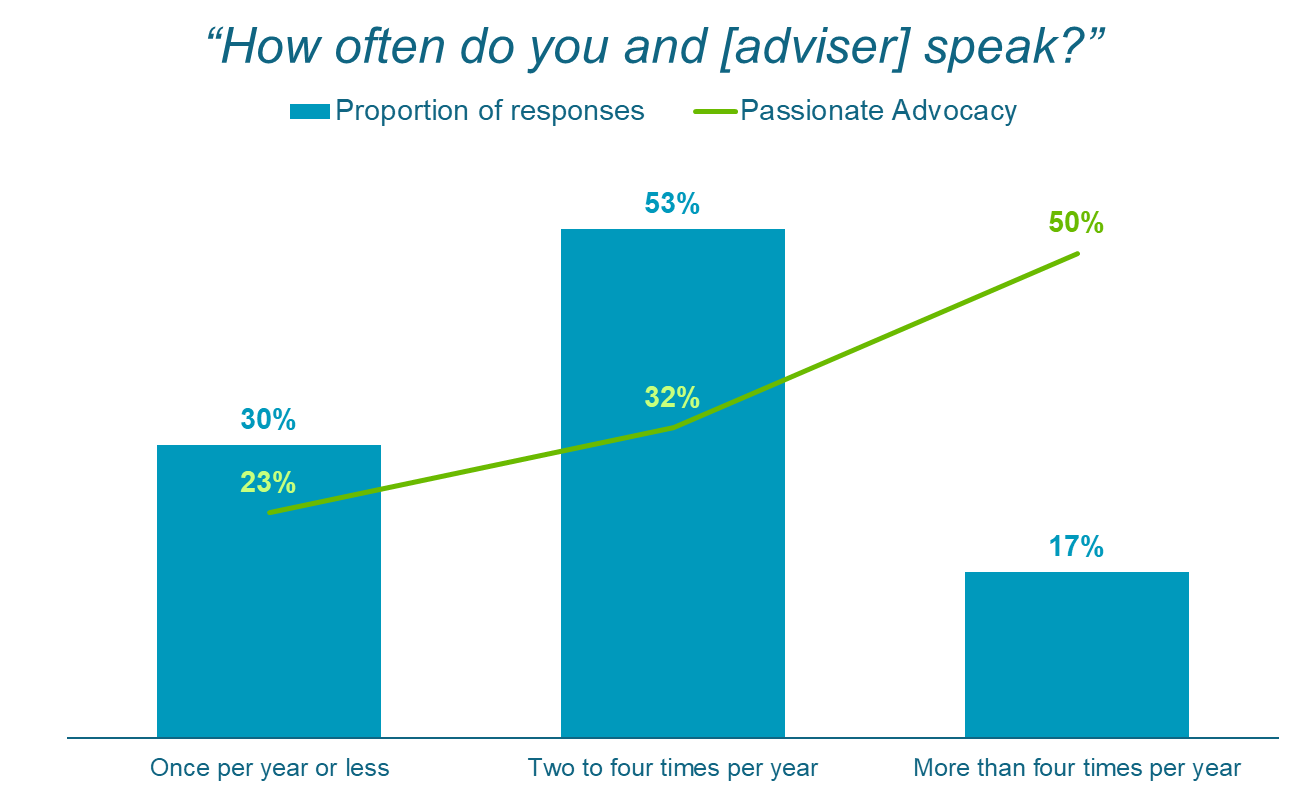Communication Frequency
Communication Frequency is a Driver of Elevation Goal 2: Delighting existing clients, promoting advocacy and retention
Data based on responses to the following question, asked in the Verified Client review form
“How often do you and [adviser] speak?”
Possible responses
Less than once per year
Once per year
Two to four times per year
More than four times per year
Communication Frequency Score
Proportion of respondents answering “Two to four times per year” or “More than four times per year”
Relationship between Communication Frequency and Passionate Advocacy
The relationship between Communication Frequency and Passionate Advocacy is highly statistically significant
The frequency with which advisers and clients speak arose as a key driver of advocacy through our qualitative research with firm management teams, advisers and clients.
We confirmed this relationship quantitatively through our review forms.
How to improve your score:
Regular touch points
Checking in. Give clients a call with no agenda other than to see if they’re OK and if they need anything or have any questions. This makes you more accessible and promotes advocacy as your client feels you really care about their well being.
Events. You may want to invite your clients to an event. This could be a wine tasting, VIP entry to a cultural event, a box at a show or a talk from a fund manager. Some advisers gain massive advocacy by making their clients feel special from inviting them to such events.
Newsletters. Consider sending out a regular newsletter. You can either write your own or buy one in from a third party. There are several financial services marketing companies who provide and distribute pre-prepared newsletters for a small fee. Newsletters could be on financial or property market updates, educational on a specific topic or just to let them know what’s going on at your firm.
Make it relevant. Don’t spam clients with irrelevant information. Too many or irrelevant communications are annoying and likely to turn clients off. Keep the information relevant and interesting, and the frequency appropriate for your average/target client.
Follow up from all meetings with a communication (client portal, email or letter) outlining the key concepts and agreed actions. This re-enforces what has been said in the meeting and is a sign to your client you care that they understand.
Celebrate key events. Schedule greeting cards for birthdays, Christmas, or key life events like retirement. Whilst it can be seen as a bit cheesy, people do value small things like greeting cards as it shows you’ve remembered what’s important to them.
Ask for feedback
Ask for feedback from your clients on the frequency and content of communications. This will create another touch point, help you understand if a client has received and read your communication, and give you the opportunity to use their feedback to adjust future communications to make them more engaging, timelier and improve readability.
It’s important that your client’s hear from you regularly (ideally at least 4 times a year) so they don’t forget you and feel comfortable contacting you to let you know about any changes to their circumstance. Create a regular communication schedule to ensure you stay in touch and update it based on client feedback.

